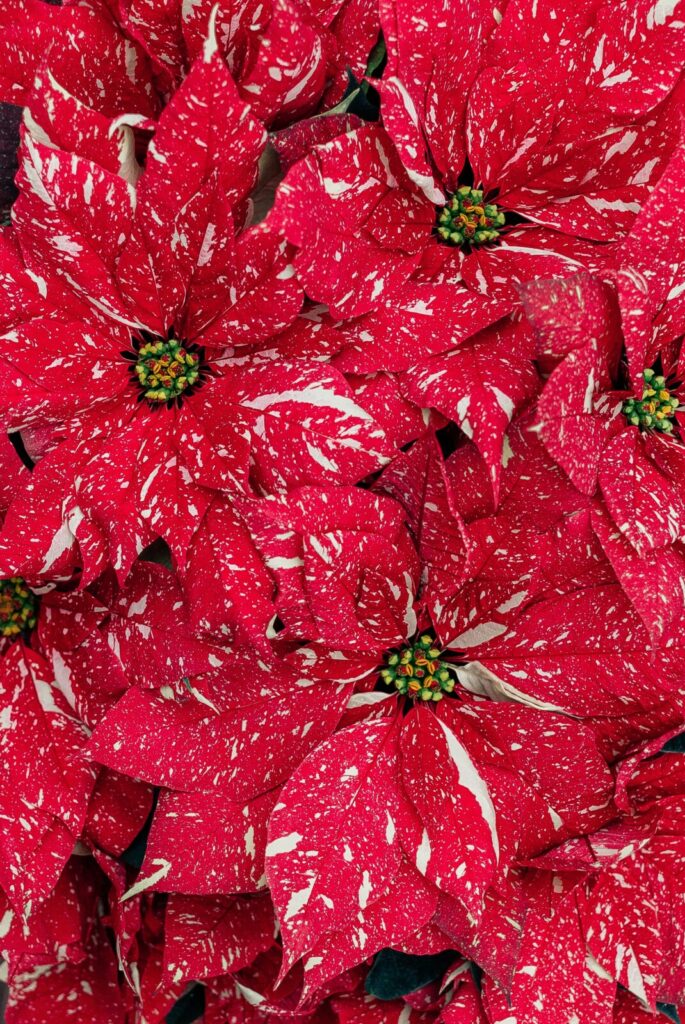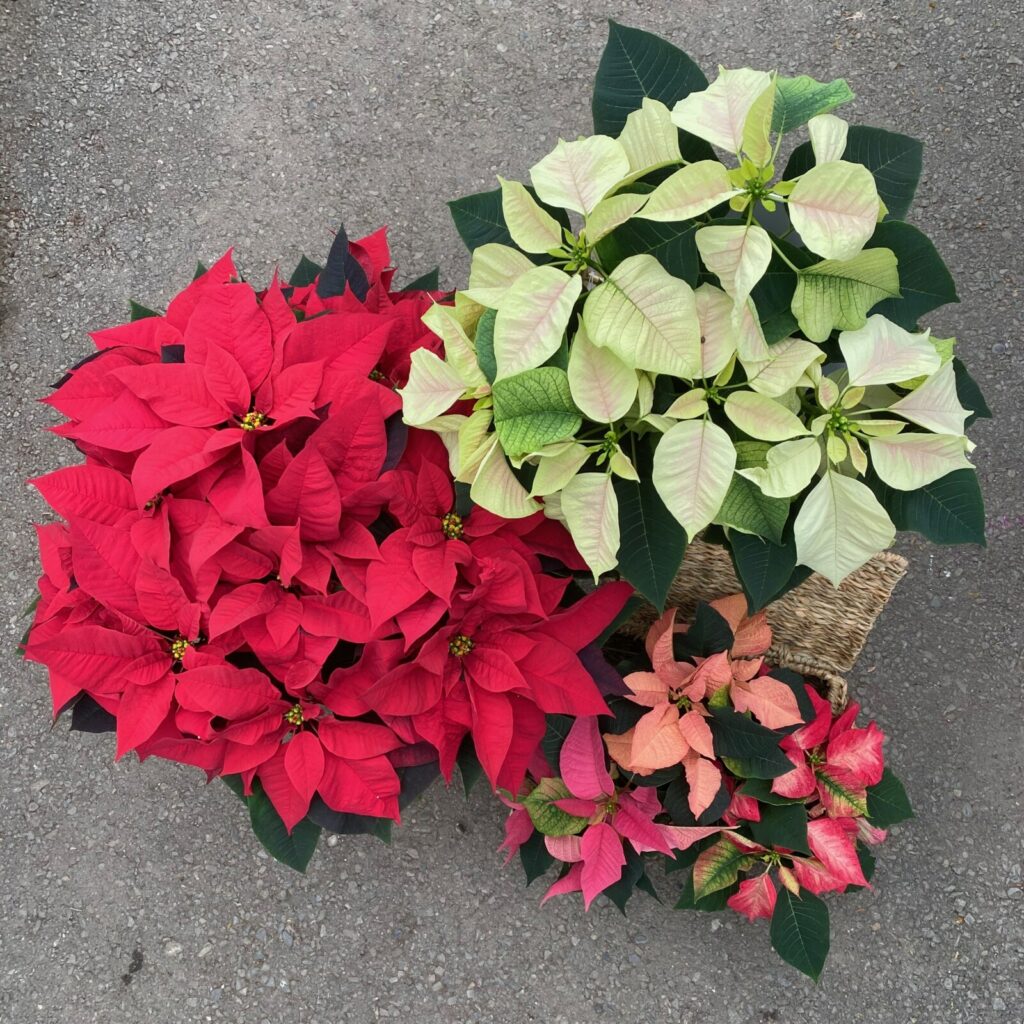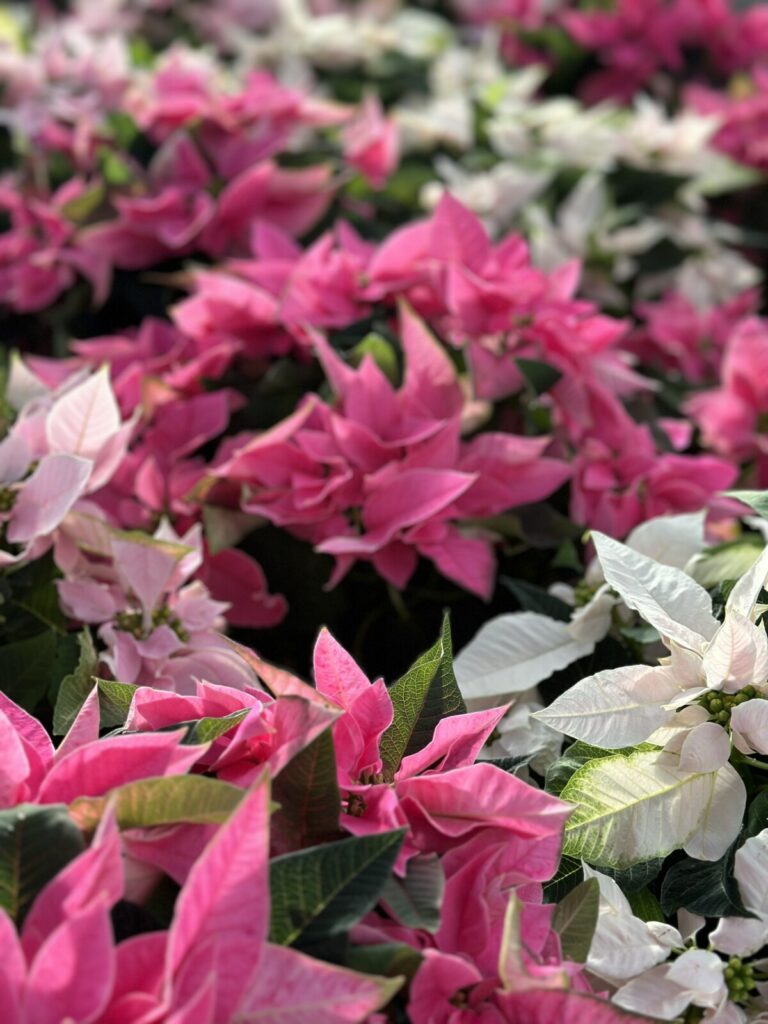
We love Poinsettias for so many reasons, but especially because they provide beautiful colour to our homes during the cold, dreary winter! These popular holiday plants are widely sought after during the Christmas season as they are often seen as a holiday staple. Interestingly enough, there are actually a few varieties of Poinsettia out there such as Princettias, Christmas Mouse, and . But don’t worry, all of these poinsettias are relatively simple to love. Regardless of the name, the care is the same.
Did you know that Poinsettias are actually members of the spurge family, Euphorbia, which includes many succulents? They are native to Central America – southern Mexico, specifically. These plants were used by the ancient Aztecs to make a coloured dye for clothing and cosmetics, and they also used the poinsettia’s milky white sap to create a medicine to treat fevers! Although they may be from the same family as many succulents, they are not as drought tolerant as most succulents, nor can they handle the direct heat of the sun.
So with all of that in mind, here’s what you need to know about caring for your Poinsettia.

Euphorbia pulcherrima
Toxic to pets – generally causing mild symptoms if consumed in small quantities (most common). If an entire plant or more is consumed, symptoms can be life-threatening.
Varied Height and Width depending on the size and variety of poinsettia.
Poinsettias can vary greatly in size, mostly related to their age and variety. If cared for properly, a poinsettia generally can last two to three months in your home. However, if you have a particularly green thumb, you may be able to keep it alive and get it to re-bloom next Christmas!
Bright, Indirect Light
These plants do best with morning light, or filtered afternoon/evening light. Keep them out of the direct sun, but keep them in a bright space where they get 8-12 hours of indirect light per day.
Moderate Watering
These plants require regular watering. Ensure the soil stays moist, but not soggy as this may cause root rot. Do not let your poinsettia dry out to the point of wilting, as poinsettias have a harder time bouncing back from this. It is best to remove the plant from it’s decorative liner or pot and to set in the sink when you water, to ensure it can drain completely and is not sitting in any water.
Well-Draining Soil with Sand or Bark
Poinsettias appreciate oxygenated soil that doesn’t retain a ton of water. Soil that’s high in organic matter is highly beneficial, so a mix of potting soil, sand and peat moss can provide a light, airy soil that offers lots of opportunity for oxygenation and nutrient transfer. Mix in a some bark to provide even more air pockets! We recommend Pro Mix Tropical Plant Potting Mix.
Normal Houseplant Fertilizer
Most poinsettias come to us from our grower’s with a slow release fertilizer in the soil that is sufficient for the holidays. However, if you are planning on keep your poinsettia alive as a houseplant after the holiday season, you may want to supplement with another fertilizer. While you can use a fertilizer that’s specifically formulated for blooming, the reality is that if your poinsettia has a well-balanced mix of organic nutrients available to it, it will have everything it needs to give you beautiful blooms. We recommend Evolve Organic Indoor House Plant Fertilizer, or even Evolve Organic Rage Plus for most of your houseplants, including poinsettias.
Infrequent
For the most part, poinsettias will be happy in the growers pot they come in. If you are planning on keeping your poinsettia alive as a house plant after the Christmas season, you may need to repot! You’ll know it’s time to repot when you see roots peeking through the bottom drainage holes, or when you can no longer seem to saturate the soil for long with water. We recommend only sizing up by an inch or an inch and a half when repotting, to ensure the root-to-soil ratio stays adequate. This allows your poinsettia to absorb water quickly enough to prevent root rot, with enough soil to retain moisture for a reasonable period of time. Make sure your pot has a drainage hole!

Normal
This plant will be happy in most spaces of your home, as long as it gets an appropriate amount of light. While they enjoy a little humidity, it is not necessary for them to grow happily. However, it is important to note that Poinsettias are easily stressed by frequent relocation, or by sudden temperature changes – so try to leave them settled in one spot most of the time, and keep them away from cold winter drafts.


Dropping leaves: This is often due to one of three factors: stress (recently repotted, recently moved, exposed to a draft or the cold, etc.), underwatering or overwatering.
Common Signs of Overwatering: yellow leaves that fall of the main stem easily.
Common Signs of Underwatering: tips getting crunchy, buds or blossoms drying up, wilty and wrinkly branches.

And of course, don’t forget to sit back and enjoy your Poinsettia!
– The Anything Grows Team

We are Cochrane & West Calgary’s largest Garden Center, owned-and-operated by plant-loving locals. We’re glad you’re here. You can visit us 7 days a week in store, or online. Get Directions
Get free gardening resources, monthly coupons, and new arrival alerts, straight to your inbox.
Join Now